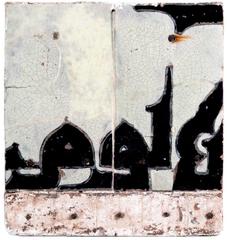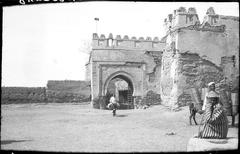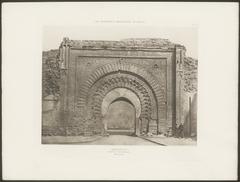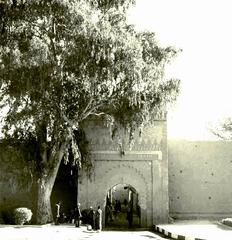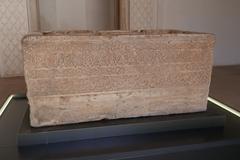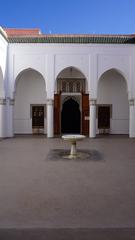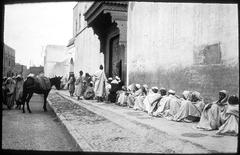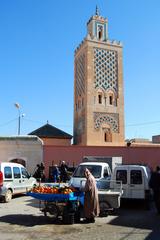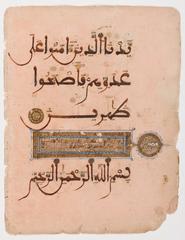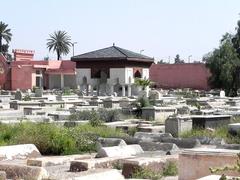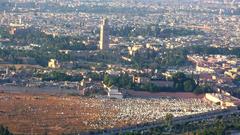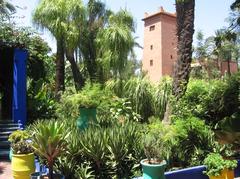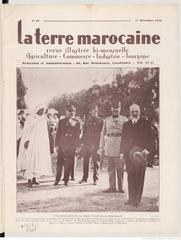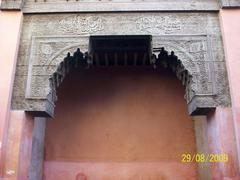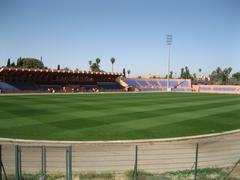Comprehensive Guide to Visiting Musée Dar Si Saïd, Marrakesh, Morocco
Date: 23/07/2024
Introduction
Welcome to the comprehensive guide on visiting Musée Dar Si Saïd, an iconic cultural landmark located in the heart of Marrakesh, Morocco. Also known as the Museum of Moroccan Arts, this museum offers an enriching experience into the rich tapestry of Moroccan heritage. Housed in a 19th-century palace constructed by Si Saïd ibn Moussa, the museum stands as a testament to the opulent and intricate architectural style of the period (Morocco World News). Its significance is not only architectural but also cultural, offering an extensive collection of artifacts that provide insights into the daily lives, traditions, and artistic achievements of various Moroccan communities, particularly the indigenous Berbers (Lonely Planet). Since its transformation into a museum in 1932, the institution has played a crucial role in preserving and promoting Moroccan culture, especially during the French Protectorate period when local traditions were at risk of being overshadowed by European influences (Encyclopaedia Britannica). Whether you’re a history buff, an art enthusiast, or a casual traveler, Musée Dar Si Saïd offers a unique opportunity to delve into Morocco’s past and present in a beautifully preserved setting.
Table of Contents
- Introduction
- History of Musée Dar Si Saïd
- Key Exhibits and Collections
- Historical Context and Influence
- Restoration and Modernization
- Cultural and Educational Impact
- Visitor Information
- Visitor Experience
- FAQs
- Conclusion
History of Musée Dar Si Saïd
Origins and Construction
Musée Dar Si Saïd is housed in a historic palace in Marrakesh, Morocco. Constructed in the mid-19th century by Si Saïd ibn Moussa, the Minister of War under Sultan Moulay Hassan I, the building is a testament to the opulence and architectural prowess of the period, featuring intricate woodwork, stucco, and zellij tilework characteristic of Moroccan craftsmanship (Morocco World News).
Architectural Significance
The architecture of Dar Si Saïd exemplifies traditional Moroccan design. The palace is built around a central courtyard, a common feature in Moroccan architecture, serving as a tranquil oasis amidst the bustling city. The courtyard is adorned with a central fountain, surrounded by lush gardens and intricate mosaics. The rooms of the palace are equally impressive, featuring carved cedar ceilings, ornate plasterwork, and colorful tile mosaics (Lonely Planet).
Transformation into a Museum
In 1932, the palace was converted into a museum, initially focusing on Moroccan arts and crafts. The transformation was part of a broader effort by the French colonial administration to preserve and showcase Moroccan cultural heritage. The museum’s collection includes a wide range of artifacts, from traditional Berber jewelry and textiles to ceramics and weapons. Over the years, the museum has expanded its collection and now includes exhibits on Moroccan music, architecture, and daily life (Moroccan National Tourist Office).
Key Exhibits and Collections
One of the museum’s most notable exhibits is its collection of Berber artifacts. The Berbers, or Amazigh, are the indigenous people of North Africa, and their culture and traditions are an integral part of Moroccan heritage. The museum’s collection includes traditional Berber clothing, jewelry, and household items, providing a glimpse into the daily lives of these ancient people. Another highlight is the collection of Moroccan carpets, showcasing the intricate designs and craftsmanship that have made Moroccan carpets famous worldwide (Smithsonian Magazine).
Historical Context and Influence
The establishment of Musée Dar Si Saïd was part of a broader trend in the early 20th century to create institutions that would preserve and promote Moroccan culture. This was particularly important during the French Protectorate period (1912-1956), when there was a risk that traditional Moroccan arts and crafts could be overshadowed by European influences. The museum played a crucial role in preserving these traditions and ensuring their transmission to future generations (Encyclopaedia Britannica).
Restoration and Modernization
In recent years, the museum has undergone several restoration projects to preserve its historic architecture and update its exhibits. These efforts have been supported by both the Moroccan government and international organizations, reflecting the museum’s importance as a cultural and historical landmark. The most recent restoration project, completed in 2018, included the installation of modern climate control systems to protect the museum’s valuable artifacts from damage due to temperature and humidity fluctuations (UNESCO).
Cultural and Educational Impact
Musée Dar Si Saïd is not just a museum; it is also an important cultural and educational institution. The museum hosts a variety of educational programs and workshops aimed at promoting Moroccan arts and crafts. These programs are designed for both locals and tourists, providing an opportunity for people to learn about traditional Moroccan techniques and create their own works of art. The museum also collaborates with local schools and universities to offer educational tours and lectures, fostering a deeper understanding and appreciation of Moroccan culture among the younger generation (Moroccan Ministry of Culture).
Visitor Information
Ticket Prices
Ticket prices are very affordable, making it accessible for a wide range of visitors. General admission costs 30 MAD for adults, while children under 12 can enter for free.
Opening Hours
The museum is open every day from 9:00 AM to 6:00 PM, except on Tuesdays when it is closed for maintenance.
Travel Tips
- Best Time to Visit: Early mornings or late afternoons to avoid the midday heat.
- Nearby Attractions: The museum is located near other historical sites such as the Bahia Palace and El Badi Palace, making it easy to plan a full day of exploration.
- Accessibility: The museum is wheelchair accessible, with ramps and elevators available.
Visitor Experience
Visitors to Musée Dar Si Saïd can expect a rich and immersive experience. The museum’s exhibits are thoughtfully curated, with detailed descriptions in multiple languages, including Arabic, French, and English. The museum also offers guided tours, which provide additional context and insights into the exhibits. In addition to its permanent collection, the museum hosts temporary exhibitions and cultural events throughout the year, ensuring that there is always something new to see and experience (TripAdvisor).
FAQs
What are the visiting hours for Musée Dar Si Saïd? The museum is open every day from 9:00 AM to 6:00 PM, except on Tuesdays.
How much are the tickets for Musée Dar Si Saïd? General admission costs 30 MAD for adults, and children under 12 can enter for free.
Is Musée Dar Si Saïd wheelchair accessible? Yes, the museum is wheelchair accessible, with ramps and elevators available.
Are there guided tours available at Musée Dar Si Saïd? Yes, the museum offers guided tours in multiple languages.
Conclusion
Musée Dar Si Saïd stands as a testament to the rich cultural heritage of Morocco. Its history, from a 19th-century palace to a modern museum, reflects the country’s commitment to preserving and promoting its artistic traditions. For visitors to Marrakesh, a visit to Musée Dar Si Saïd offers a unique opportunity to explore the history and culture of Morocco in a beautiful and historic setting.
Call to Action
Plan your visit to Musée Dar Si Saïd today and explore the rich cultural heritage of Morocco. Don’t forget to download our mobile app for more travel tips and updates. Follow us on social media for the latest news and events.
